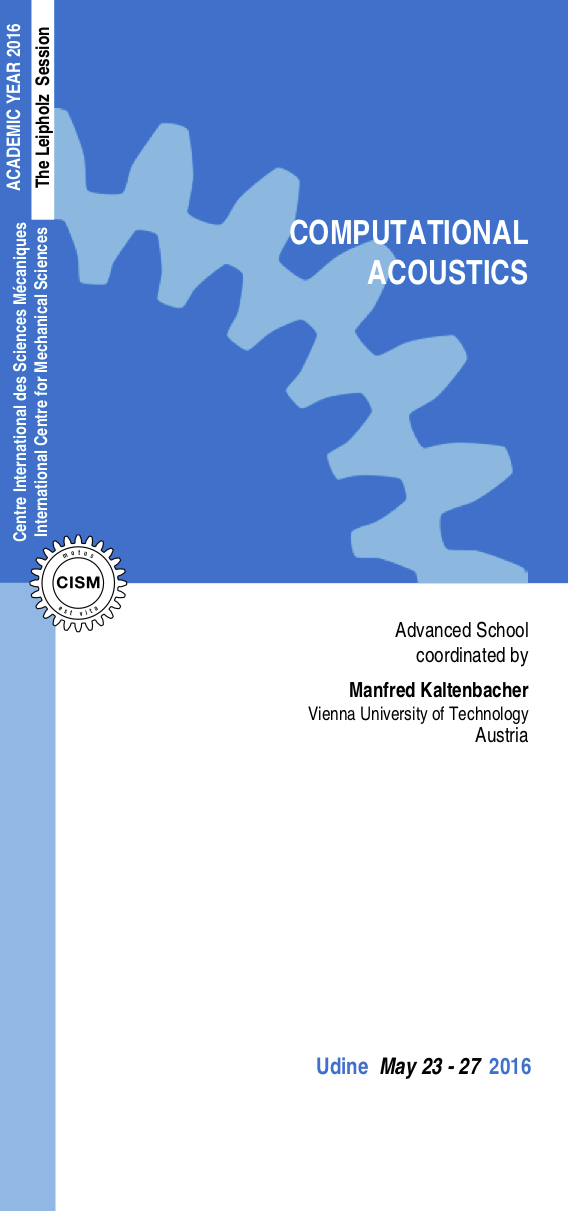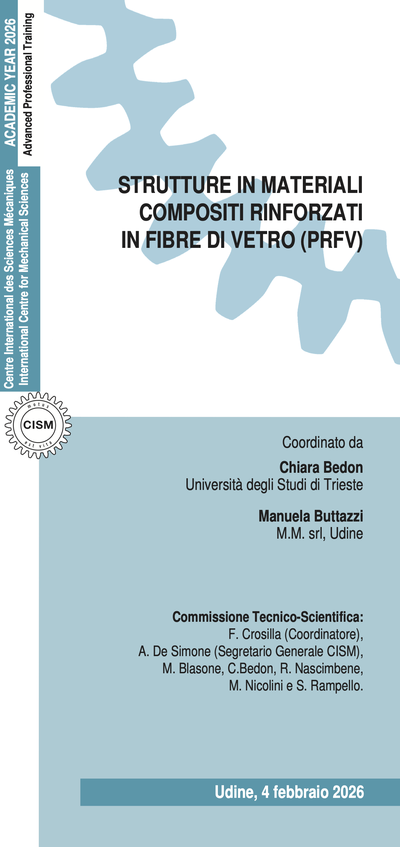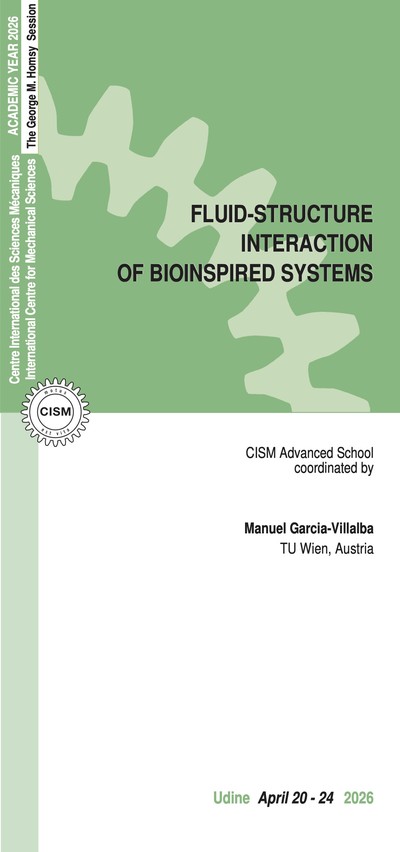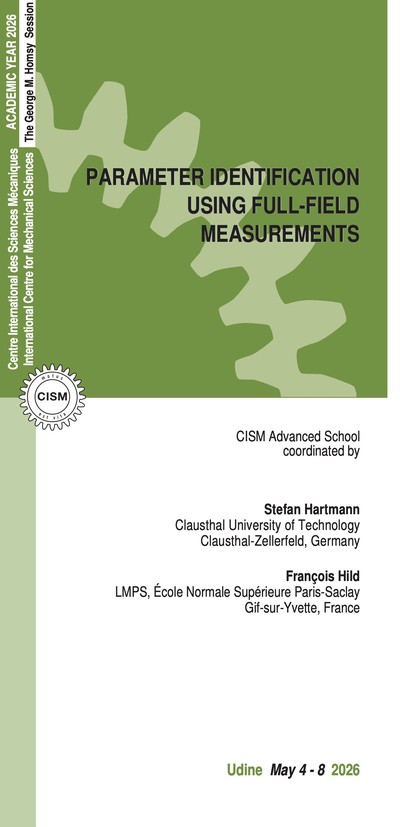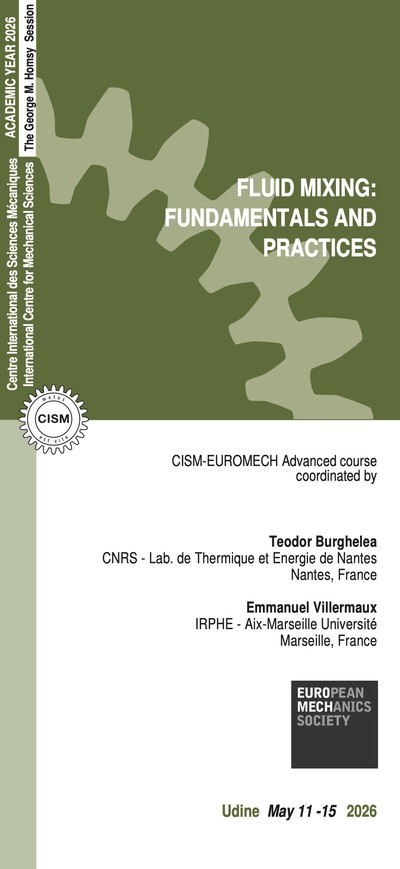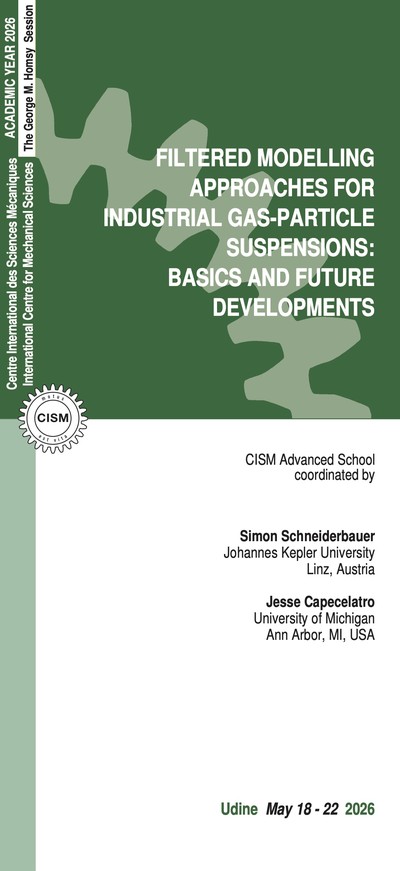Noise levels have become an issue for urban communities for many years due to the rapid growth of air and ground traffic densities (e.g., airplanes, trains, cars, etc.). Additionally to these noise sources, many other machines (e.g., wind turbines, pumps, fans, etc.) producing significant noise levels surround our daily activities and contribute to deterioration of quality of life. A quite large part of this noise is generated by vibrating structures and by ows (flow induced sound), and manufactures have considered the noise level of their products as a relevant design parameter. Therefore, the demand towards reliable and computational efficient numerical simulation programs is strongly growing, so that these tools can be used within a virtual prototyping development cycle. The aim of the course is to present the state-of-the-art overview of numerical schemes efficiently solving the acoustic conservation equations (unknowns are acoustic pressure and particle velocity) and the acoustic wave equation (pressure or acoustic potential formulation). Thereby, the different equations model both vibrational and owinduced sound generation and its propagation. In addition, state-of-the-art methods for the solution of so-called inverse problems, i.e., problems of identifying sources, scatterers, material properties, etc., will be presented. Main applications, which will be discussed within the course, will be towards aerospace, rail and automotive industry as well as medical engineering. Thereby, we have composed a team of lecturers who are able to address these topics from the engineering as well as numerical points of view. The course will contain both the physical / mathematical modelling, latest numerical schemes to solve the underlying partial differential equations, and relevant practical applications. Thereby, we will derive the conservation equations of acoustics both for a stagnant as well as moving uid. In addition, we will derive the couplings to structural mechanics and fluid flow. This will allow us to describe vibrational as well as flow induced (aeroacoustics) sound. In a next part, we will present appropriate numerical schemes for the solution of the derived partial differential equations: finite difference, finite element, finite volume, and boundary element methods. We will discuss latest numerical schemes as higher order and spectral finite elements, mixed finite elements, nonconforming grid techniques as well as discontinuous Galerkin methods. For many practical applications, one needs to apply impedance boundary conditions and has to cope with free radiation. Here, we will discuss higher order absorbing boundary conditions and perfectly matched layer techniques to efficiently approximate free radiation conditions. Since numerical schemes leads to a system of algebraic equations, which have to be solved, we will also present algorithms for direct and iterative solvers as well as latest developments on multigrid methods. The course is addressed to doctoral students and postdoctoral fellows, as well as to academic and industrial researchers and practicing engineers, with a background in mechanics, acoustics, applied physics, aerospace engineering, civil engineering or applied mathematics.
Manfred Kaltenbacher: Numerical Simulation of Mechatronic Systems Finite Elements for Multiphysics, Springer, 3rd ed., 2015. Chapters: 2, 5, 8, 9. David Kopriva: Implementing Spectral Methods for Partial Differential Equations, Springer, 2009. Chapters: 4,5. Alfio Quarteroni, Riccardo Sacco, Fausto Saleri: Numerical mathematics, Texts in Applied Mathematics, SpringerVerlag, Berlin, 2007. Chapters: 3, 4. Steffen Marburg and Bodo Nolte.: A Unified Approach to Finite and Boundary Element Discretization in Linear Time Harmonic Acoustics. In S. Marburg and B. Nolte, editors, Computational Acoustics of Noise Propagation in Fluids, chapter 0, pages 1-34, SpringerVerlag, Berlin Heidelberg, 2008. ISBN 9783540- 774471. Chapter 0. Dan Givoli: Time Reversal as a Computational Tool in Acoustics and Elastodynamics. Journal of Computational Acoustics, Vol. 22, No. 3 (2014).
Gary Cohen (None)
6 lectures on: High-order finite difference methods, mixed spectral elements and dispersion analysis. We first construct high order finite difference methods for the acoustics equation, and then introduce a mixed formulation of spectral elements which lead to very cheap schemes in terms of storage and computation. Finally, the accuracy and stability for classical time discretizations of both methods are provided by plane wave analysis (dispersion analysis). Application to geophysics and acoustics in ow are given.Dan Givoli (None)
6 lectures on: Absorbing boundary conditions, perfectly matched layer techniques, inverse problems and the time reversal method. Absorbing boundary conditions of low as well as higher-order and the Perfectly Matched Layer (PML) method will be covered. In addition, the Time Reversal (TR) method as a computational tool for solving inverse problems in acoustics will be discussed with applications to the identification of sources and scatterers in acoustic and elastic media.Manfred Kaltenbacher (None)
6 lectures on: Physical / mathematical modeling of vibro and aeroacoustics, higher order and non-conforming finite element techniques. We discuss the fundamental equations of acoustics and its reformulation as a scalar wave equation. Towards multiphysics the coupling to structural mechanics and flow dynamics will be discussed and its numerical solution by higher order finite elements and non- conforming grid techniques with applications to human phonation and airconditioning systems.Ulrich Langer (None)
with Martin Neumüller5 lectures on: Direct and iterative solvers, preconditioning methods, geometric and algebraic multigrid. In detail we discuss advanced direct solvers (e.g., sparse direct solvers) and iterative methods with advanced preconditioning techniques, where the main focus will be on multigrid methods.
Steffen Marburg (None)
6 lectures on: Boundary element techniques as well as their coupling to the finite element method. The focus will be on the Boundary Element (BE) method to solve the Helmholtz equation, its implementation, the general idea of fast BE methods, and discretization accuracy compared to FE methods. Furthermore, coupled FE/BE schemes for solving structure-fluid interaction problems and its application to automotive industry and submerged structures will be presented.Claus-Dieter Munz (None)
6 lectures on: Continuous and discontinuous Galerkin formulations, higher order methods. Main focus will be on Discontinuous Galerkin methods and their application to solve acoustic and fluid dynamic equations. The advantages towards classical finite element or finite volume methods will be discussed. Applications will be the direct aeroacoustic simulation of turbulent flow and its noise generation around cars.The registration fee is of 575,00 Euro + VAT taxes*, where applicable (bank charges are not included). The registration fee includes a complimentary bag, four fixed menu buffet lunches (Friday subject to numbers), hot beverages, downloadable lecture notes and wi-fi internet access. Applicants must apply at least one month before the beginning of the course. Application forms should be sent on-line through our web site: http://www.cism.it or by post. A message of confirmation will be sent to accepted participants. If you need assistance for registration please contact our secretariat. Applicants may cancel their course registration and receive a full refund by notifying CISM Secretariat in writing (by email) no later than two weeks prior to the start of the course. If cancellation occurs less than two weeks prior to the start of the course, a Euro 50,00 handling fee will be charged. Incorrect payments are subject to Euro 50,00 handling fee. A limited number of participants from universities and research centres who are not supported by their own institutions can be offered board and/or lodging in a reasonably priced hotel or students' dormitories, if available. Requests should be sent to CISM Secretariat by March 23, 2016along with the applicant's curriculum and a letter of recommendation by the head of the department or a supervisor confirming that the institute cannot provide funding. Preference will be given to applicants from countries that sponsor CISM. Information about travel and accommodation is available on our web site, or can be mailed upon request.
* Italian VAT is 22%.
